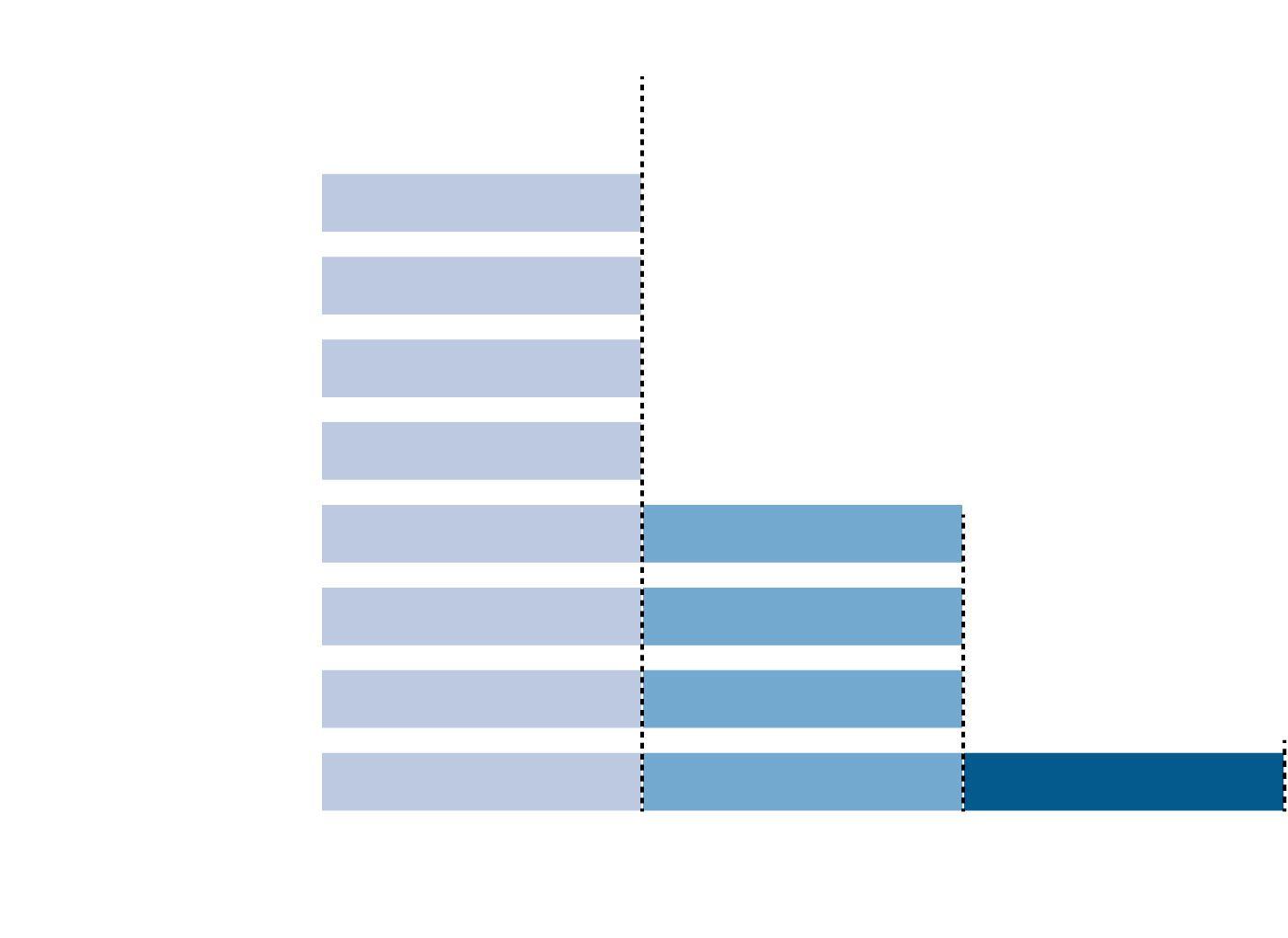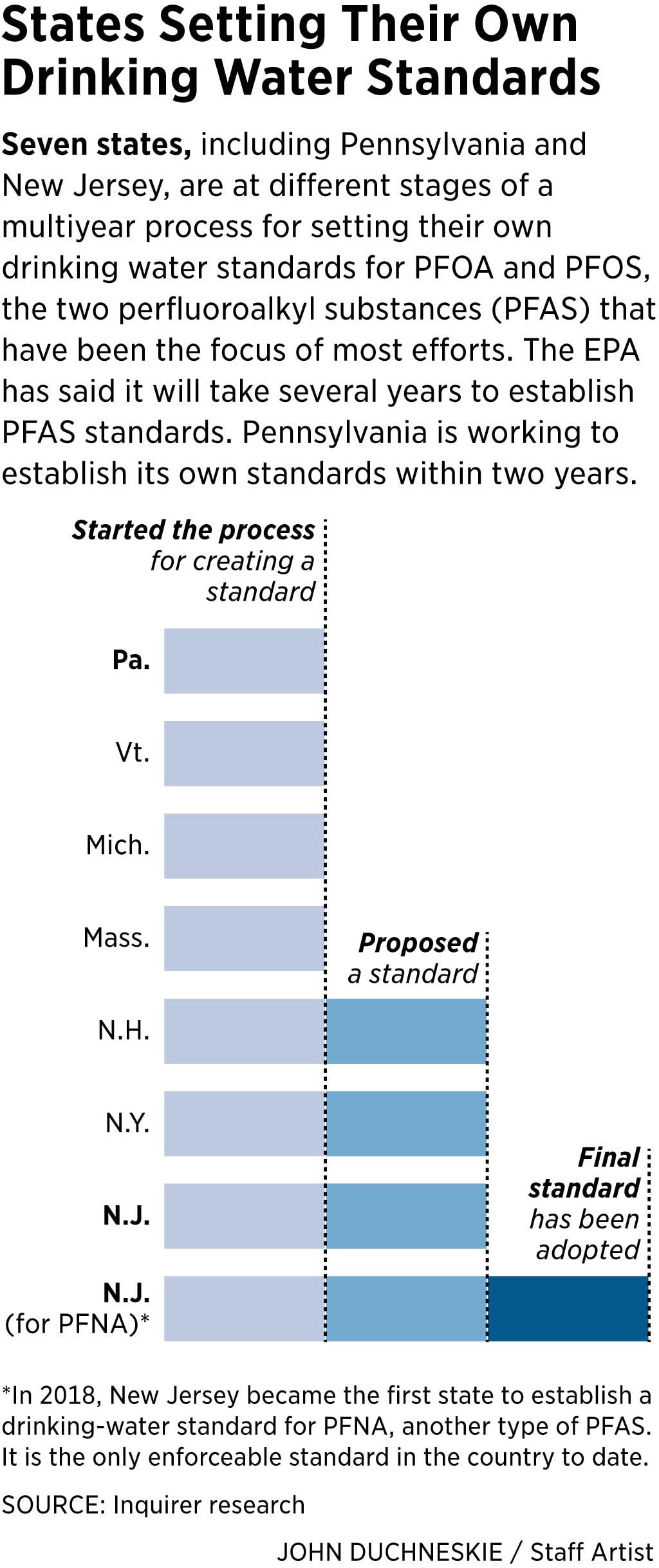Setting clean-water standards is the EPA’s job. Pa. and other states are doing it instead.
Pennsylvania is one of seven states pursuing its own clean drinking-water standard in the face of PFAS water contamination.

When Maria Collett began knocking on doors as a Pennsylvania state Senate candidate in 2018, she heard one thing over and over: Do something about the drinking water.
Collett, a registered nurse and attorney from Lower Gwynedd Township, heard it from mothers who reminded her of herself. From a man who struggled with what to tell his children about the tap water they drank. From a woman who required life-altering surgery to treat a condition that could be linked to the chemicals that had been widely discovered in the local water supply.
Residents in the Horsham, Warrington, and Warminster Township areas were more than frustrated with government responses to the water-contamination crisis that has affected 90,000 in Bucks and Montgomery Counties and an estimated 19 million nationwide. They were scared. Exposure to PFAS chemicals has been connected to cancer, thyroid disease, immune-system problems, decreased fertility, and lower birth weight.
>> READ MORE: Pa. testing water to find out if contamination is ‘a problem across the entire state’
The federal response to PFAS contamination has been slow and piecemeal, even as residents in Pennsylvania, New York, New Jersey, and a handful of other states have clamored for aid, testing, and a nationwide safe drinking-water standard. In February, the EPA said it would take several years to establish such a standard; until then, the EPA will continue to rely on a nonbinding advisory level for drinking water that the federal government’s own scientists have suggested doesn’t go far enough to protect public health.
Now, seven states including Pennsylvania are taking unprecedented steps to set their own drinking-water limits, effectively seizing one of the EPA’s key roles. Officials are navigating uncharted territory, with varying amounts of funding and political will, hoping state-level standards can circumvent — and pressure — the federal agency.
“This is about making sure that our kids are safe. It’s about making sure that [people are] not suffering from side effects just because they were drinking water out of their tap,” said Collett, who was elected in November and joined a group of legislators in Harrisburg who have introduced bills to clean up the mess.

States Setting Their Own Drinking Water Standards
Seven states, including Pennsylvania and New Jersey, are at different stages of a multiyear process for setting their own drinking water standards for PFOA and PFOS, the two perfluoroalkyl substances (PFAS) that have been the focus of most efforts. The EPA has said it will take several years to establish PFAS standards. Pennsylvania is working to establish its own standards within two years.
Started the process for creating a standard
Pennsylvania
Vermont
Michigan
Proposed
a standard
Massachusetts
New Hampshire
New York
Final standard has been adopted
New Jersey*
New Jersey (for PFNA)*
*In 2018, New Jersey became the first state to establish a drinking-water standard for PFNA, another type of PFAS.
It is the only enforceable standard in the country to date.
SOURCE: Inquirer research
JOHN DUCHNESKIE / Staff Artist

States Setting Their Own
Drinking Water Standards
Seven states, including Pennsylvania and New Jersey, are at different stages of a multiyear process for setting their own drinking water standards for PFOA and PFOS, the two perfluoroalkyl substances (PFAS) that have been the focus of most efforts. The EPA has said it will take several years to establish PFAS standards. Pennsylvania is working to establish its own standards within two years.
Started the process for creating a standard
Pa.
Vt.
Mich.
Mass.
Proposed
a standard
N.H.
N.Y.
Final standard has been adopted
N.J.
N.J.
(for PFNA)*
*In 2018, New Jersey became the first state to establish a drinking-water standard for PFNA, another type of PFAS. It is the only enforceable standard in the country to date.
SOURCE: Inquirer research
JOHN DUCHNESKIE / Staff Artist

[Can’t see the chart above? Click here to view the entire article.]
Last year, New Jersey became the first state to establish a drinking-water standard for one type of PFAS. Along with New York and New Hampshire, it is also close to regulating the two types targeted by the EPA’s health advisory and most state efforts. Vermont, Michigan, and Massachusetts, like Pennsylvania, are working on creating standards. At least three others are actively exploring it.
Lawmakers in 23 states have proposed 62 bills this year addressing PFAS-related issues, according to the National Conference of State Legislatures. Alaska, California, Minnesota, and others have gone halfway, creating nonbinding recommendations for drinking water or cleaning up contamination above certain levels without creating a legal standard.
Regulating drinking water is just one step in dealing with PFAS. Researchers and regulators are also confronting contamination in groundwater, soil, and air; effects of other types of PFAS; and the need for health studies. Efforts are also underway to force accountability from polluters, including the Department of Defense and manufacturers like 3M.
“We can’t wait for as long as we think it’s going to take them to do it,” Lisa Daniels, director of the DEP’s Bureau of Safe Drinking Water, said during a roundtable discussion hosted by members of Congress in Upper Dublin last month.
To sidestep the EPA, state officials must navigate a bureaucratic quagmire. Some states have made more progress than Pennsylvania, but none has adopted a standard for PFOA and PFOS, the two perfluoroalkyl substances most efforts have focused on.
In Pennsylvania, unlike in other states, the governor can’t create an enforceable standard, known as a maximum contaminant level (MCL), and Harrisburg has not passed legislation to address the crisis. Officials say they are constrained by regulatory requirements, bureaucracy, funding, and the need for more research.
That means frustration continues among those imploring both state and federal officials to do more: Many think the state should simply decree that no PFAS is legal in drinking water. Dozens of skeptical residents filled the auditorium at Abington Senior High School for the April meeting where the DEP announced its plans.
“Other states are making changes promptly and Pennsylvania, as far as I can see, is really dragging and lagging behind,” Hope Grosse, who grew up next to the former military base in Warminster and who has pushed for answers and action about PFAS, told officials at the meeting.
In Pennsylvania, ‘an unprecedented step’
Pennsylvania officials told The Inquirer last month they are pushing to get a safe drinking-water standard in place within about two years — far more quickly than the EPA’s plan. They will also sample hundreds of the state’s drinking-water systems.
“This is an unprecedented step for Pennsylvania and is a top priority of the administration,” Gov. Tom Wolf, who formed a PFAS task force to address the issue, said in a statement. But Wolf noted that the DEP was still bound by "the legal requirements of the rule-making process.”
Some advocates and lawmakers have questioned Pennsylvania’s timeline or urged the DEP to create a temporary rule to tide the state over until the two- to three-year process is done. Not so easy, state officials say.
“Folks have to understand that these states have never done this before,” Daniels said. “And so when you think about how you do that and how you move forward, there’s a certain amount of infrastructure that you have to get into place.”
For example, state law also requires the DEP to make a cost-benefit analysis, complete a toxicological analysis — just hiring a toxicologist took months — and determine how much it will cost each water system to comply with a new drinking-water rule. It also must conduct statewide sampling, which began this month and will take one year, to gather data to justify a new standard, officials said.
A quick fix, like making a temporary standard or borrowing analysis from a state such as New York or New Jersey, can’t happen, DEP officials said: They must be able to account for state-specific data if the regulation is challenged in court. But Pennsylvania is communicating with other states responding to PFAS.
“We have been very much in contact with other states as to the work and activity that they’ve been doing,” said DEP Secretary Patrick McDonnell in an interview with The Inquirer.
Creating an interim standard would require all the same steps as creating a permanent one, McDonnell said. And if the interim and final standards differed (for example, if the legislature set an interim standard), it could cause extra expense and confusion for water providers.
“If that number was just sort of plucked out of the air, for example,” Daniels said, “we’d have a very difficult time in court trying to defend a number we didn’t develop based on sound science.”
Funding adds another complication. The DEP estimates setting an MCL will cost $1.5 million annually. Even as the DEP works to create the standard, McDonnell said, it “need[s] the legislature to act” to increase its budget.
“If you under-fund an agency that is responsible to protect us, they don’t really have the ability to do their job,” said U.S. Rep. Madeleine Dean, who worked on the problem as a state legislator and has introduced bills this year in Congress. But, she added of the DEP’s timeline: “They were looking for leadership from EPA. Everybody waited way too long.”
In Michigan, for instance, efforts to create a standard also didn’t begin until this year, but the governor has directed officials to complete the process there by October and get a standard in place by spring.
David Andrews, a senior scientist for the Environmental Working Group, which advocates for PFAS regulations, said he thought Pennsylvania could move faster.
“I don’t think that time frame has to be that long,” Andrews said. “In a matter of months, I think you could get at least a reasonable sampling across the state to understand the extent of contamination.”
Some bills in the legislature propose creating a standard or requiring the DEP to bypass the regulatory process and set a predetermined level.
“If we get some information down the road that shows there is some level of chemicals that is acceptable for human ingestion, then we could always change the MCL at that point,” said State Rep. Todd Stephens (R., Montgomery), who lives in Horsham and is drafting a bill that would disallow any amount of PFAS in drinking water. “But this idea that we’re going to allow chemicals in our drinking water until we figure out how harmful they are is asinine to me.”
‘The role of responsible government’
Not everyone believes the state should prioritize PFAS-related measures or the associated costs. The bills proposed in Harrisburg have not advanced so far this session.
“Given that EPA has not yet finalized its toxicological profile of these compounds, we believe it is premature for the state to set its own drinking water limit and that the better approach is to have a federal standard,” said Kevin Sunday, director of government affairs at the Pennsylvania Chamber of Business and Industry.
Meeting a drinking-water standard is costly. In Horsham Township, where officials independently eliminated PFAS from the water system, residents are paying $1.2 million annually, township manager Bill Walker said at the roundtable.
While lawmakers and some state attorneys general are working to hold alleged polluters accountable for cleanup, costs for compliance with the state’s standard would be borne by the water systems, the DEP said.
Those responsible for contamination should absorb the cleanup costs, said Chris Crockett, chief environmental officer at Aqua America, which has addressed PFAS in some of its Montgomery County wells. He said Aqua was ready to meet any MCL implemented by the state, but said, “It is unfair for water customers to bear this cost."
Meanwhile, most states are still relying on the EPA, whose officials insist they are doing the job. They pledged to complete an evaluation by the end of the year and then begin the years-long process of creating a national standard.
Members of Congress are among those who say the EPA’s plan is inadequate, but they also say state levels aren’t substitutes for an aggressive national response.
“We need to know as Americans — not just Pennsylvanians, [but] as Americans — what is safe drinking water,” said Dean. “The EPA should have taken the lead. That is the role of responsible government.”
Collett, the state senator who represents communities with contamination but whose own drinking water was not tainted, said she believes that the more people learn about PFAS, the more support there will be for cleanup measures and standards.
“I commend the DEP and even the EPA for finally making this a priority," she said, "but I use the word finally because … the actions are far overdue.”
Correction: A previous version of the story misstated the number of states that are working on maximum contaminant levels.